By Yvonne Liu-Constant
Children all over the world play together, and more often than not, they fight over toys. What do adults do when conflicts arise, and how do they teach children to resolve them? How does the teaching and learning of conflict resolution shape young children’s understanding of themselves in relation to others in the group, and foster their sense of “I” “we”, and “they”?
In early childhood classrooms in the US, children are typically encouraged to “share” and “be fair.” To resolve conflicts, adults teach children to talk and negotiate about ways to divide toys, take turns, or trade one preferred toy for another. The underlying value is that “fair” means “equal rights” – each individual child gets a say in how to share the toys equally.
Children's understanding of fairness evolves over time and is influenced by both cognitive development and sociocultural contexts. As children’s cognitive abilities develop, so does their moral reasoning. Piaget’s stages of moral development and Kohlberg’s stages of moral reasoning are the most widely recognized efforts to document how children’s understanding of rules and fairness becomes more sophisticated with age. The ability to take the perspective of others, which typically develops during the preschool years, is crucial for understanding fairness. Children who can better consider others’ feelings and viewpoints are more likely to act fairly. In other words, as young children develop beyond the “I” perspective into “you” and “we,” they are more capable of being fair.
In addition, the way children perceive and practice fairness is significantly shaped by their interactions with parents, teachers, and peers, as well as by cultural norms. While fairness is valued in most, if not all, cultures, there are differences in what is considered “fair” based on cultural emphases of “I” and “we.” Individualistic cultures emphasize personal autonomy, individual rights, and self-reliance. Members of such cultures often prioritize personal goals over group goals and value independence and personal achievement. In the individualistic culture of the US, when conflicts arise during children’s play, adults help children negotiate fair shares that respect the equal rights of individuals.
In comparison, collectivistic cultures emphasize group harmony, family and community cohesion, and interdependence. Members of such cultures are more likely to prioritize group goals over personal goals and value cooperation and social relationships. At the Good Starts project, we have been consulting with people from different cultures in an effort to understand how children develop a sense of self in relation to others in groups. Here are three anecdotes about conflict resolution that offer cultural insights.
The older child yields to the younger
In China and Taiwan, the concept of 讓 rang or yield is the default strategy for conflict resolution. When children fight over toys at home, adults would typically say to the older child, “You’re older, you need to yield to the younger and let them have the toy.” According to Sing-ying Chung, an early childhood educator in Taiwan, the strategy of yielding is also commonly applied in mixed-age classrooms, where the teacher would further explain to older students, “You are the big sister and big brother in this class. You are more capable, so you are responsible for taking care of the little brothers and sisters.”
Xin Xiang, a Harvard Graduate School of Education graduate, currently a faculty member at Beijing Normal University, shared an experience of her daughter who, as young as 2.5 years of age, could follow rules of turn-taking and sharing when adults around her share the expectation. However, when extended family members with more traditional values are around, her daughter learned to take advantage of being the youngest, grabbing toys without asking and expecting others to yield to her. These outcomes often counteracted Xin’s attempt to raise her child to negotiate for fair share and turn-taking.
Rang, or yielding, is rooted in Confucian philosophy. This long-surviving system of thought and action emphasizes that everyone occupies a specific role in the hierarchy, beginning with the family. Those in the lower ranks of the hierarchy (son/daughter, younger sibling, student, employee) respect the higher ranks (parent, older sibling, teacher, boss), while the higher ranks strive to be benevolent leaders (仁君 ren jun) and take care of those in the lower ranks. Being a big sibling is, developmentally, one’s first task in life of being benevolent, and yielding is taught as the strategy. The idea is: you were once the youngest and everyone yielded to you. Now that you are older and more capable, you have the responsibility to yield and take care of those who are younger. This is considered “fair” because the older care for the younger while the younger respect the older, and the harmonious “we” is more valued than the equal rights of “I.” The structure of the collective is maintained, where all the individuals behave according to their roles in the hierarchy based on benevolence.
The One Child Policy in China resulted in a generation without siblings, limiting opportunities for children to learn and practice yielding at home. To counteract these effects, early childhood educators in China have taken on the mission of teaching young children how to share and interact with peers, placing an emphasis on social development at school. The One Child Policy ended in 2015, and its long-term effects are still being observed.
One big bucket
Iris Ponte, an early childhood educator in the Boston area, shared an observation she made while conducting research at a Japanese preschool. The sandbox in the preschool’s playground was a popular spot to play, but the toys were a source of conflict. One boy in particular was often at the center of conflicts - he demanded the best toys and grabbed what he wanted from others. To help resolve the conflicts, the teachers offered more toys so that the children did not have to share, yet they continued to find new things to fight over. Observing the situation, a veteran teacher offered her advice, “One big bucket is what they need.”
The next morning in the sandbox, all the toys were put away except for one big bucket. As the children arrived, the boy who was usually the center of conflict immediately declared, “This bucket is mine!” He kept the bucket to himself and went to work, filling it with sand using his bare hands. Soon he realized he couldn’t do it alone, and so he asked other children for help. Before long, a group of children worked on filling the bucket together, and when they succeeded, they cheered! Then it came time to tip the bucket over. The boy exclaimed, “I will do it by myself!” yet he was not able to. Again, he had to ask other children for help, and when they succeeded in tipping over the heavy bucket together, they erupted into another big cheer!
By taking away all the toys and leaving only one big bucket, the thoughtful veteran teacher fostered a sense of group by creating a need for “we,” which helped each “I” find their purpose in the group effort. Fairness is not about each individual having an equal share, as the less experienced teachers tried to do by offering more toys, but about the group uniting under a superseding goal and forming a bond as a collective.
What do you need the toy for?
The Opal School, a charter school in Portland, Oregon, collaborated with Project Zero on the Inspiring Agents of Change project. A goal of this work was to identify the learning conditions that support inventiveness in early childhood and primary schools. The project explored inventiveness in social-emotional as well as other realms of development. In a learning moment documented on video, a small group of young children were engaged in pretend play using pebbles, loose parts, and little plastic frogs at the water table. One of the children had fewer frogs than others and complained, “Not fair!”
As is typical in schools in the US, the children negotiated. What differed was the response of the Opal School teacher – instead of guiding the children towards equal shares, she encouraged the child who complained to talk to his peers and ask: What do you need the frogs for? What are you planning to do? The questions got the children talking about their ideas for playing. When one of the children explained that he was planning to build an underwater playground for all the frogs, the children got excited! As they each pushed frogs into the middle of the water table, they happily collaborated on this new idea.
Here each “I” was respected, their ideas fully heard, eventually forming a “we” with a negotiated, shared purpose. Teaching practices like these created a culture in the Opal School that went against the grain of the mainstream, individualistic culture of the US, valuing the relationships built in the collective as well as the individual rights of children.
Conclusion
Children develop their sense of self in relation to others in a group in the contexts of their school and home cultures. The cultures we happen to have grown up in likely have an emphasis on individualism or collectivism, but the cultures we foster for children as educators and family members do not have to be limited as such. What can we learn from other cultures’ values on individuals, relationships, and groups? How can we foster a new, inventive perspective of “I”, “we”, and “they” in young children, so that the next generation can think, feel, and act beyond the “I”? These are some of the questions we ponder at the Good Starts project. We would love to learn about your experiences and ideas. Please comment below!
The Good Starts Project is generously funded by the Saul Zaentz Charitable Foundation.























